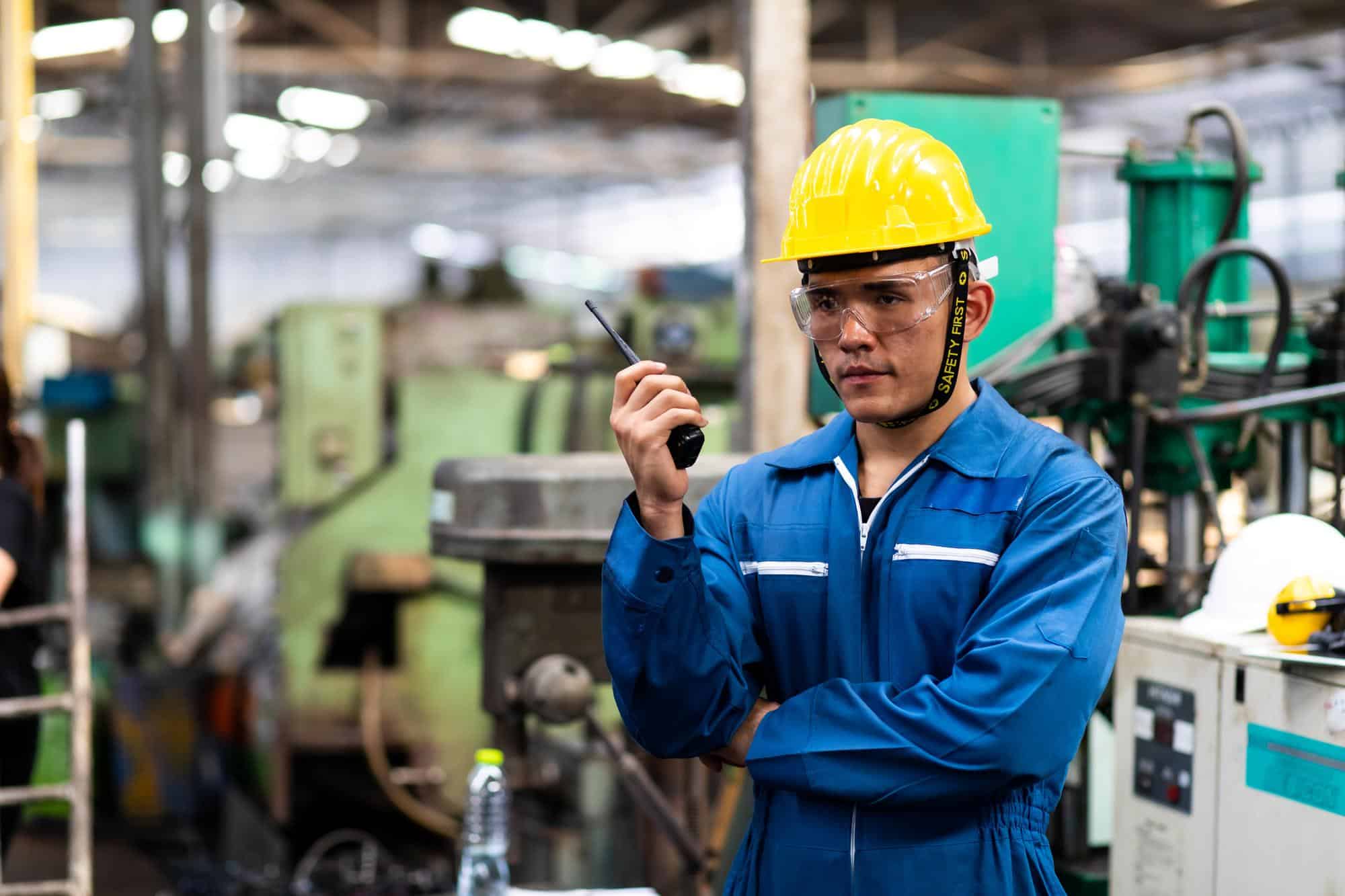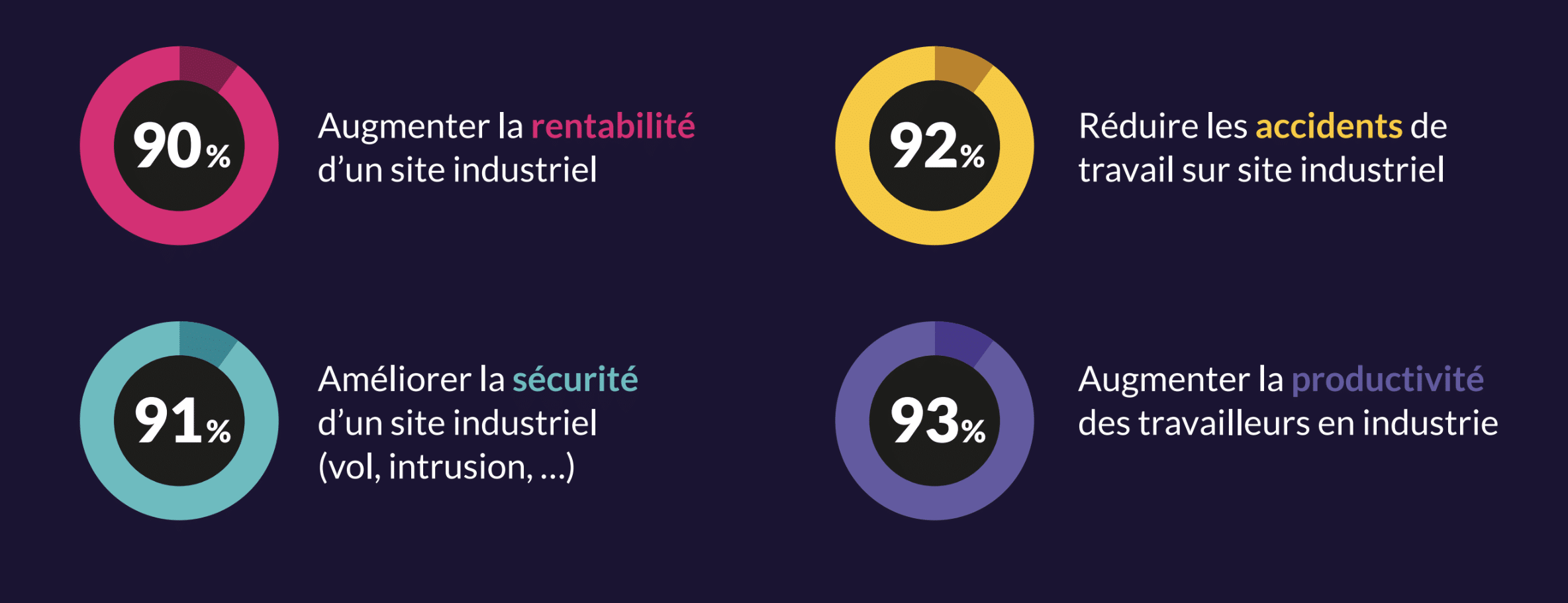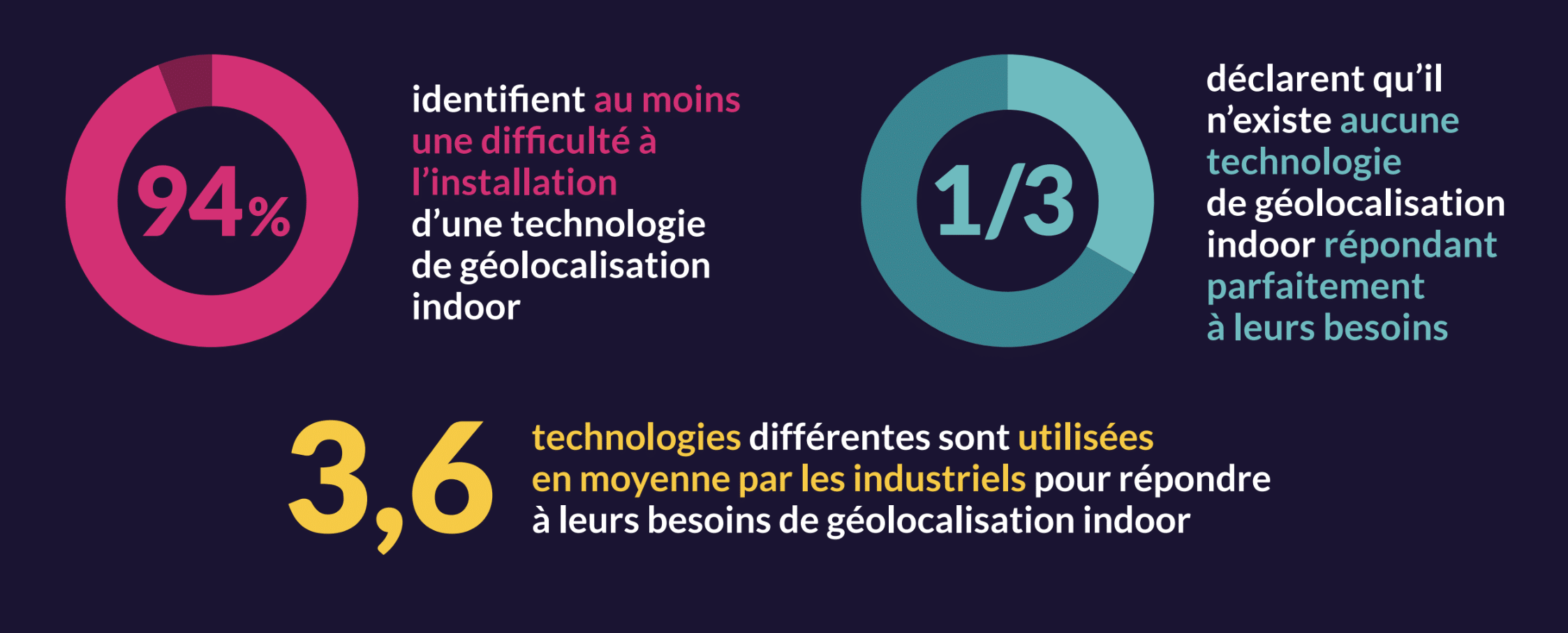
OpinionWay survey: industry 4.0 and indoor geolocation
Share this article
Contents
Share this article
Indoor geolocation: a strategic asset for Industry 4.0
In a rapidly changing industrial world, indoor geolocation technologies are emerging as a key tool for meeting the challenges of Industry 4.0.
The OpinionWay survey shows that industry professionals clearly perceive the added value of indoor geolocation technologies. They believe that these technologies bring concrete benefits, including :
- Safety: reducing workplace accidents and preventing risks.
- Productivity: optimizing the flow of people and operational processes.
- Profitability: better management of assets and resources.
These benefits echo the strategic priorities of today's industrial companies, who seek to reconcile performance and safety in often complex and demanding environments.

Sector maturity more advanced than expected
Nearly half of all industrial sites surveyed claim to have adopted at least one indoor geolocation technology. This level of adoption shows that industry already recognizes the strategic value of these solutions for optimizing site management and improving overall performance. Companies that have integrated these technologies mainly take advantage of them to locate machines and tools, which are used at more than two-thirds of equipped sites. However, the geolocation of people, although crucial to safety, remains less widespread, with less than a third of sites equipped with this type of device. This reflects a prioritization of investments towards hardware assets rather than human assets.
For the other half of decision-makers surveyed, who are not yet equipped with indoor geolocation technologies, the need is clear. 7 out of 10 decision-makers in this group recognize that such a solution would benefit their company today.
"Industry 4.0 is constantly looking for new technologies to reinvent itself and gain in efficiency. This OpinionWay study revealed a striking fact: almost half of French manufacturers have already adopted indoor geolocation technology. This result, both surprising and revealing, underlines a real need and a strong expectation for these solutions." Pierre-Arnaud Coquelin, Wheere CEO
Existing solutions do not fully meet needs
94% of decision-makers surveyed identified at least one difficulty in installing indoor geolocation technology
Although the benefits of indoor geolocation technologies are well recognized, their adoption remains hampered by significant obstacles, including cost, complexity of implementation, concerns about data security and confidentiality, and a lack of accuracy in some cases. Furthermore, the general perception of available solutions reflects this dissatisfaction. 32% of executives believe that no indoor geolocation technology perfectly meets the needs of their industries.
3.6 different technologies are used on the same site to meet specific localization needs
In the absence of fully adapted solutions, manufacturers are forced to multiply technologies to cover their indoor geolocation needs. On average, 3.6 different technologies are used on the same site to meet specific location requirements, whether for people, machines or tools. This fragmentation leads to more complex management, higher costs, and greater system integration challenges.

Wheere innovation: the opinion of industry professionals
At a time when existing indoor geolocation solutions are struggling to fully meet the needs of industrial sites, Wheere's solution was well received by the decision-makers surveyed. 75% of them consider that Wheere's technology meets the modern needs of industrial sites. On a more specific level, 77% found the technology interesting for their own company.
These results show that Wheere technology could meet some of the expectations not covered by existing solutions, offering a combination of ease of installation, extensive coverage and precision.
Did you like it?
Share it and discover other articles you might also like!
- News
- Articles
- Articles


An answer